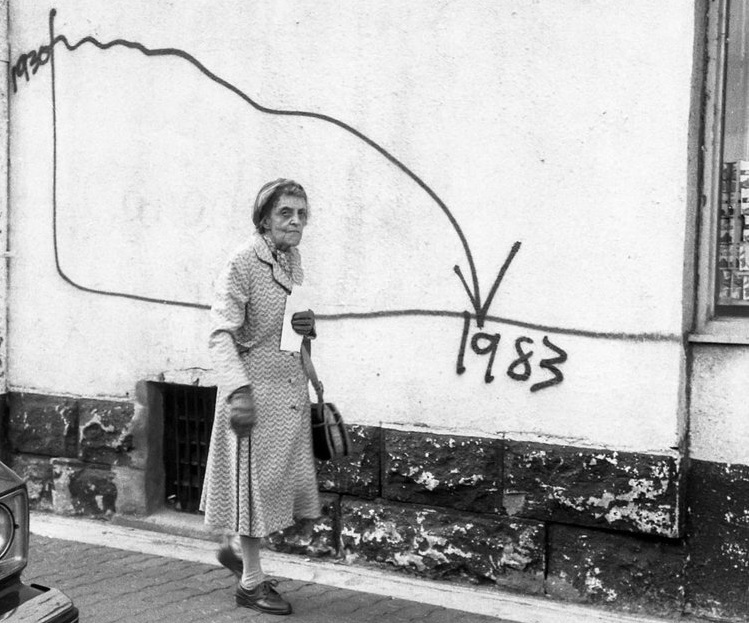
Urban Documentary Photographers, Analysis Exercise
Often called “street photography”, this type of imagery that documents the urban environment is an inspiring and abundant source for photographers.
We analyze four big names in urban documentary photography, each presenting an original and inspired vision:
- Saul Leiter
- Joel Meyerowitz
- Martha Cooper
- Fan Ho
Looking at the portfolio of each photographer, we identify the themes that inspire documentary photographers and how they communicate this vision. One wonders about the influence and the historical value of the documentary process as well as the creative and artistic merit of the works.
Hypothesis: Documentary Photography
The hypothesis we seek to validate is this: the alert eye of an experienced photographer is looking for content and composition that reflects their social and artistic vision.
The New York Photography School
In North America, urban documentary photography is referred to as “The New York School of Photography”. It is a source of influence for a group of photographers who lived and worked in New York during the years from 1930-1990. This school shared a number of aesthetic influences, subjects, and a recognizable style. Recurring themes include:
- humanism,
- a strong and determined approach
- the use of journalistic photo techniques
- the vision of film noir (fatalism, humor, pessimism).
The photographers’ favourite subject is the city itself.
The photographers Lewis Hine (sociologist, 1874-1940), Walker Evans (journalist during the Great Depression, 1903-1975) and Henri Cartier-Bresson (1908-2004) are often referred as precursors, who rejected the traditional view of journalism in order to assume their production of documentary photography.
The known photographers to the movement are:
- Diane Arbus (1923 – 1971)
- Alexey Brodovitch (Russian fashion photographer, 1898 – 1971)
- Ted Croner (American, 1922 – 2005)
- Bruce Davidson (Magnum Agency, 1933 -)
- Don Donaghy (1936 – 2008)
- Louis Faurer (1916 – 2001)
- Robert Frank (1924 -)
- Sid Grossman (Social activist, 1913 – 1955)
- William Klein (1928 -)
- Saul Leiter (1923 – 2013)
- Leon Levinstein (1910 – 1988)
- Helen Levitt (1913 – 2009)
- Lisette Model (1901 – 1983)
- David Vestal (1924 -2013)
- Weegee (1899 – 1966)
Selection of documentary photos from the New York School of Photography: Street_Portfolio
The primary inspiration that influences the group’s photographers is that art, particularly photographic art, can be used to improve the conditions of the working class, develop a local presence of editorial offices with great variety of photographic publications, the development of exhibition spaces, and locally produced films in movie theaters.
Portfolio 1 : Saul Leiter (1923 – 2013)
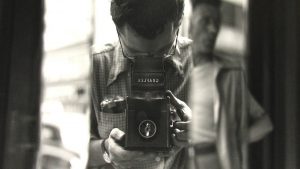
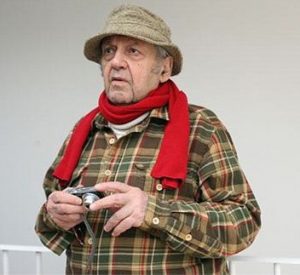
Leiter was born in Pittsburgh, Pennsylvania. His father was a known Talmud religious intellectual and Leither studied to become a rabbi. His mother gave him his first camera at the age of 12. At the age of 23, he left the school of theology and moved to New York to become an artist since he had an interest in painting.
He uses a Leica 35 mm. In 1948, he began taking color photographs and began collaborating with other contemporary photographers such as Robert Frank and Diane Arbus.
Leiter worked as a fashion photographer for 20 years and was published in the several magazines including Show, Elle, British Vogue, Queen, and Nova. In the late 1950s, he worked with Esquire and later with Harper’s Bazaar.
He has integrated his production of street photography with his production of fashion photography, using the streets of New York as an environment for fashion design.
Martin Harrison, editor of Leiter’s book “Early Color” (2006): “Leiter’s sensibility… placed him outside the visceral confrontations with urban anxiety associated with photographers such as Robert Frank or William Klein. Instead, for him the camera provided an alternate way of seeing, of framing events and interpreting reality. He sought out moments of quiet humanity in the Manhattan maelstrom, forging a unique urban pastoral from the most unlikely of circumstances.”
Selection of street images : Leiter_Portfolio
Advertising image selection: Leiter_Advertising
The film « Everybody Street »

The film “Everybody Street” is in line with the influence of this group. Produced in 2013 by Cheryl Dunn, the film presents the following New York documentary photographers:
• Boogie,
• Martha Cooper,
• Bruce Davidson,
• Elliott Erwitt,
• Jill Freedman,
• Bruce Gilden,
• Max Kozloff,
• Rebecca Lepkoff,
• Mary Ellen Mark,
• Jeff Mermelstein,
• Joel Meyerowitz,
• Clayton Patterson,
• Ricky Powell,
• Luc Sante,
• Jamel Shabazz.
“Everybody Street” features field interviews and the work of street photographers from New York – the incomparable city that has inspired photographers for decades. Captured by renowned photographer Cheryl Dunn on a 16mm film and color HD movie, the film pays tribute to the spirit of street photography through a cinematic exploration of New York City. The work captures the visceral rush, singular of perseverance and sometimes a risk associated with street artists.
Portfolio 2 : Joel Meyerowitz (1938 — )
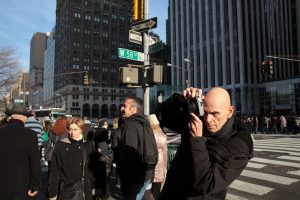
Excerpt from comments from the movie “Everybody Street”:
Clips to view: 0 – 5:40 min, 44:50 to 45:30 min, 1:20:00 to 1:22:00 min
“ Some photographers go to the streets, and other photographers go to a studio.
Some pretends it is a movie and other photographers walk in to the world and say “show me”.
Those select few who are willing to go to chaos with the high hope to interact with the moment, where life will get clarified for them.
They can welcome ambiguity and surreal aspects of this kind of chaos.
Even thou it is chaos out there, they will have a moment of clarification
There is plenty of people who don’t see it, because they don’t look that way.”
A little later, he will say: “… things appearing out of the ordinary reality, a slice of a moment, a 1/1000 of a second recognition … There is a whole lot of people who do not have that kind of belief that the world will present itself that way, so they do not see it, because they are not looking that way”
Joel Meyerowitz is a photographer whose work has appeared in more than 350 exhibitions in museums and galleries around the world. He was born in New York in 1938 and began photographing in 1962. As one of the first proponents of color photography in the mid-1960s, Joel Meyerowitz played a key role in the evolution of the attitude towards the use of color photography, whose resistance to acceptance was almost universal.
His book “Cape Light” is considered a classic work of color photography and has sold more than 100,000 copies in its 30 years of life. He is the author of 17 other books, including Aperture’s recently published book, Legacy: Preserving Natural Spaces in New York City Parks.
Meyerowitz is a two-time recipient of the Guggenheim Award, a recipient of both NEA and NEH awards, as well as a winner of the Deutscher Fotobuchpreis. His work is in the collection of the Museum of Modern Art in New York (MOMA), the Museum of Fine Arts in Boston and many others.
Early career: Leica, black and white with gradual transition to color. The constraints imposed by the color films of the time forced him to take images with slow speeds and a reduced depth of field. Later, it changes to the 8 × 10 format, which imposes a more elaborate and thoughtful approach.
Production with Leica and B & W film: Meyerowitz_Leica_B&W
Production with Leica and color film: Meyerowitz_Leica_Color
Image of the destruction of the Word Trade Center in New York in Sept 2011: Meyerowitz_9-11
Production in 8 x 10 format: Meyerowitz_8x10_Format
Meyerowits explains its migration to the 8 × 10 format
Portfolio 3 : Martah Cooper (1943 — )
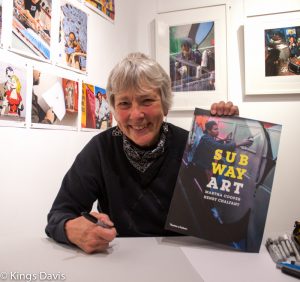
Martha Cooper is an American photo-journalist born in Baltimore, Maryland. She worked as a photographer for the New York Post in the 1970s. She is best known for documenting the New York graffiti scene of the 1970s and 1980s.
Cooper has a degree in anthropology from Oxford. Her first experience in photography began in Japan, where Cooper went to take pictures of complex tattoos. She was an intern at National Geographic in the 1960s, and worked as a photographer at the New York Post in the 1970s. Her photographs appeared in National Geographic, Smithsonian and Natural History magazines as well as dozens of books and reviews.
She began her personal production and freelance work of the New York graffiti scene during the 1970s while working for New York Post. At the end of her assignments, she began taking pictures of New York children. One day, she met a young boy named Edwin Serrano who made her know the graffiti around his neighborhood. Serrano explained to her that graffiti is an art form and that each artist has their own signature.
He presented Cooper to the graffiti artist “king,” Dondi. Cooper was the first photographer to accompany him during his outings doing graffiti. After this meeting, Cooper became fascinated by the underground subculture that these graffitist artists had created in New York.
In 1984, Cooper and Henry Chalfant published a New York City graffiti photo book “Subway Art.” It is referred to as the bible of graffiti art. The book has sold more than half a million copies.
New York Subwat Graffiti Photo Collection: Cooper_Subway_Art
Portfolio 4 : Fan Ho (1931 — 2016)
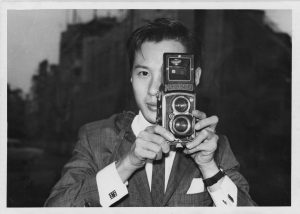
The young Fan Ho with his Rolleiflex K4A. This is the only camera he has used throughout his long career.
Ho Fan was born in Shanghai. He emigrated with his family to Hong Kong in 1949. At the beginning of the war in 1941, his parents were stuck in Macau for several years. Ho began photographing at a very young age with a Brownie that his father had left at home, and later with a dual purpose Rolleiflex that his father gave him at the age of 14.
Largely self-taught, his photos communicate a fascination with urban life: he explores alleys, slums, markets and streets. The bulk of his work consists of candid photographs of street vendors and children only a few years younger than himself. Ho used the same Rolleiflex K4A throughout his career.
“… I’ve always believed that any work of art should stem from genuine feelings and understandings … I didn’t work with any sense of purpose. As an artist, I was only looking to express myself. I did it to share my feelings with the audience. I need to be touched emotionally to come up with meaningful works. When the work resonates with the audience, it’s a satisfaction that money can’t buy.”
Ho Fan, 2014 interview with Edmund Lee
Ho was chosen as one of the ten greatest photographers in the world by the Photographic Society of America between 1958 and 1965.
The “Approaching Shadow” photo is one of Ho’s most famous works. He asked a cousin to pose near a wall at Queen’s College in Causeway Bay and added a diagonal shadow in a darkroom to symbolize that “his youth will disappear since everyone has the same destiny “. A print of this photo was sold for the sum of HK $375,000 in 2015.
Filmmaker’s Career
Ho has been an acclaimed Hong Kong filmmaker and actor.
He worked with the Shaw Brothers Studio in 1961 to develop his film career. He began as a an assistant in the movie “The Swallow” (1961) to then becoming an actor in several films. Ho was acclaimed for his performance as a monk in the adaptation of “Journey to the West” by Shaw Brothers Studio.
In the early 1960s, he also produced a series of independent short films, including “Big City Little Man”, a production that won international awards. In 1969, he moved to Hong Kong and produced 20 films with various studios in Hong Kong and Taiwan.
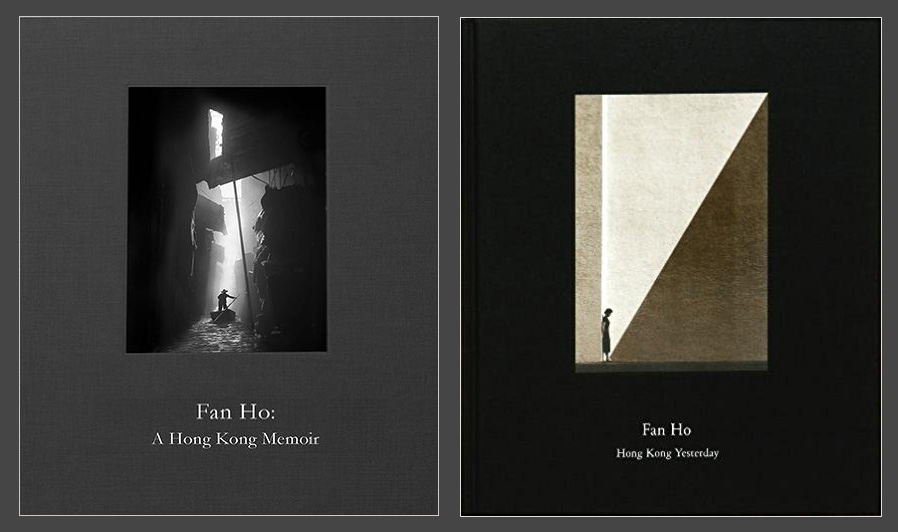
Two monographs by Fan Ho, published in the United States: “Hong Kong Yesterday” (2006) and “A Hong Kong Memoir” (2014)
Fan Ho’s Photo Selection: Ho_Portfolio
Portfolio 5 : Gilbert Duclos
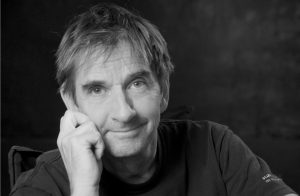
Based on these observations, we illustrate the production of a Quebec documentary photographer: Gilbert Duclos. We will see how his work fits into the art of documentary photography of the twentieth century.
How to understand the work of Gilbert Duclos
Duclos had the opportunity to receive financial support from the Canadian Council for the Arts to develop his portfolio of documentary images. From 1977 to 2007, Gilbert Duclos worked on a series of photos entitled “Cities”, whose theme is the human in the urban environment. Inspired by the humanist tradition of documentary photography, his images take us on the streets of major Western cities in a resolutely urban journey. Taken randomly from his meetings, the black and white photos, all vertical, reflect his curiosity and sometimes his influence vis-à-vis his contemporaries.
Today Gilbert Duclos’ portfolio has an impressive gallery of people captured in Montreal, Paris, New York and Berlin, etc., and is a personal and unique testimony of the human within the urban environment.
References:
12 Lessons Joel Meyerowitz Has Taught Me About Street Photography
Joel Meyerowitz on the key to street photography
Sydney Morning Herald, Aug 2015
Meyerowitz emphasises the importance of photographing the “unspoken, tacit, impending” relationship between disparate things. He believes that it is important to be able to see the context which you are taking your frame from, while you are photographing. “When you put the frame up to your eye, the world continues outside the frame … you might actually use that as dramatic or unseen content. It leaves certain things ambiguous or unspoken, but impinging upon.” He believes that the key to the success of his images has been in realising the relationships between elements.
YouTube Clip
Joel Meyerowitz Color Work, 1970-1980, Changing Time
Meyerowits explique sa migration vers le format 8×10
Martha Cooper, Train Graffities
Gritty and Graffitied: Street art with photographer Martha Cooper
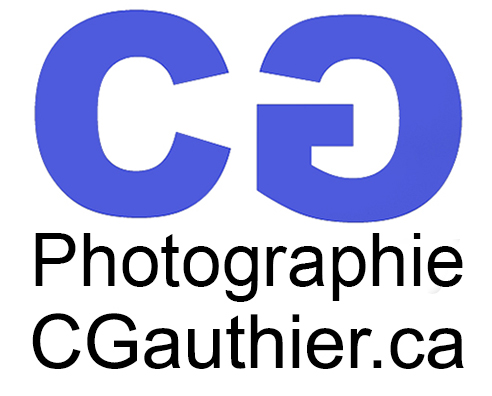


No Comments